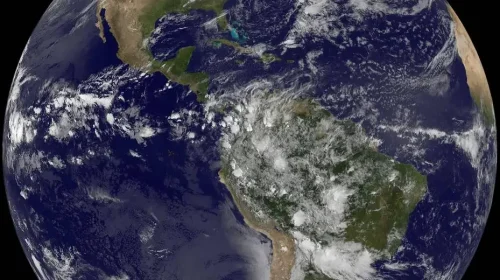Average global ocean temperatures have been warming consistently over the past century with a notable exception, a region in the North Atlantic dubbed the “warming hole,” which has shown a cooling pattern. This persistent anomaly is often attributed to a slow-down of a global ocean circulation system called the Atlantic Meridional Overturning Circulation (AMOC), but a new modeling study supported in part by the Climate Program Office’s Climate Variability & Predictability (CVP) Program suggests a different driver. Results from a Community Earth System Model (CESM) simulation shows that most of the cooling trend can be explained by atmospheric processes alone. A group of researchers from the University of Miami, Columbia University, and the University of Colorado – Boulder, including CVP-funded scientists Amy Clement (Miami) and Mark Cane (Columbia) found that enhanced westerly winds work to effectively remove heat from the ocean surface, and the cooling is reinforced by wind-driven ocean processes. These results, published in Geophysical Research Letters, offer a better understanding and a new perspective to the “warming hole” phenomenon, emphasizing the role of the atmosphere as a thermal driver in the North Atlantic.
Models Show North Atlantic Cooling Driven by Atmospheric Processes












